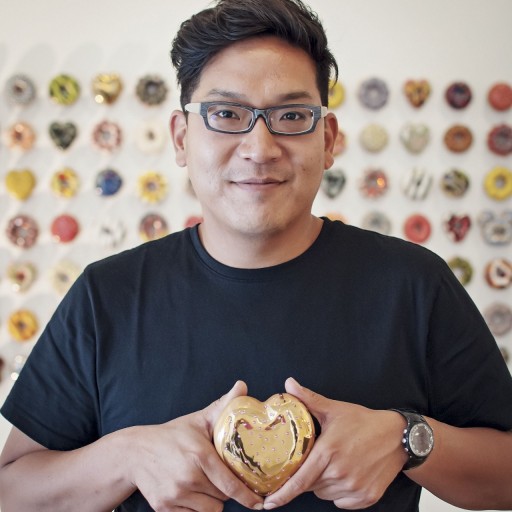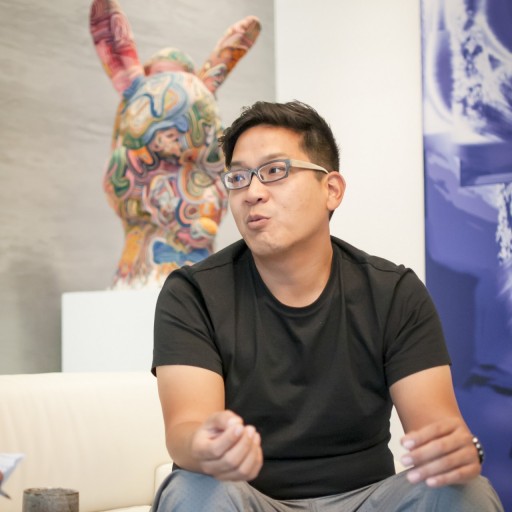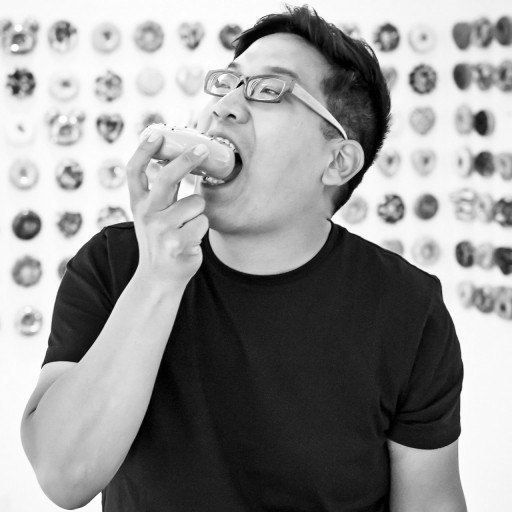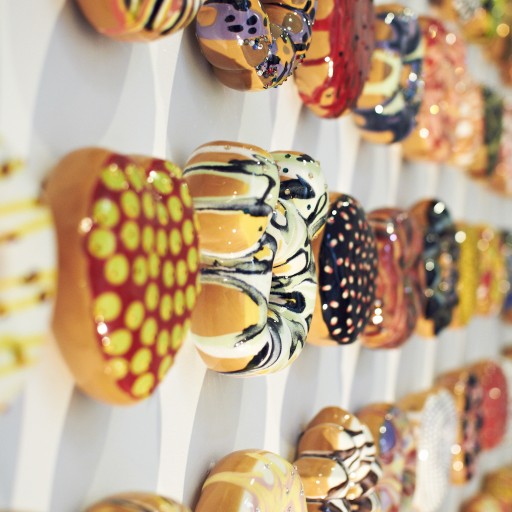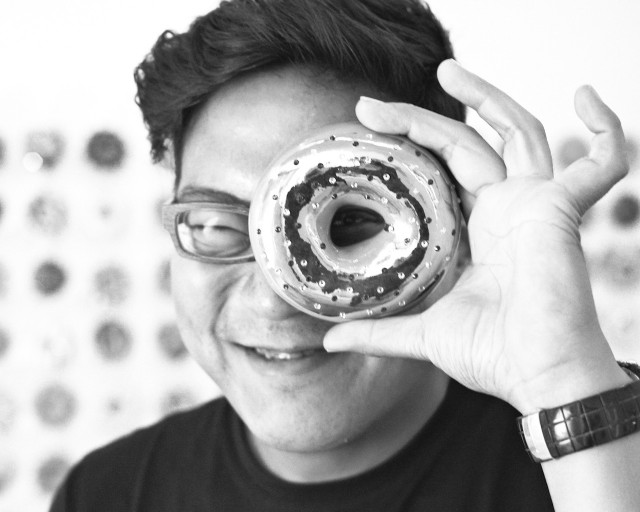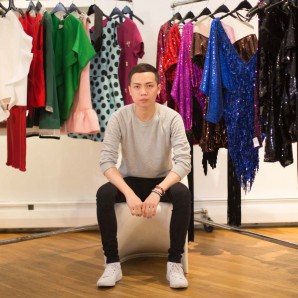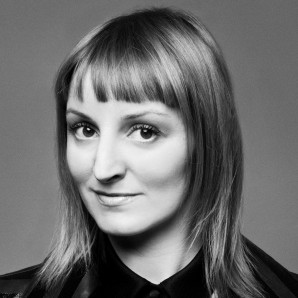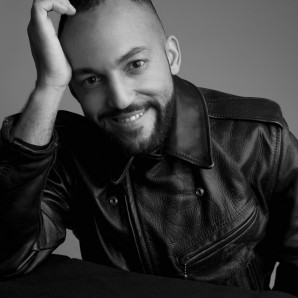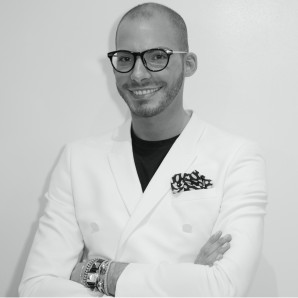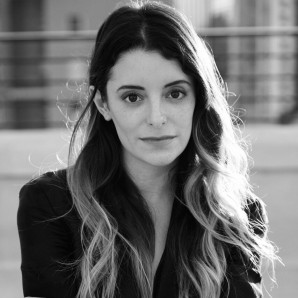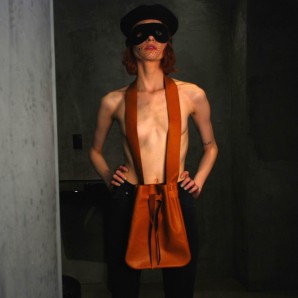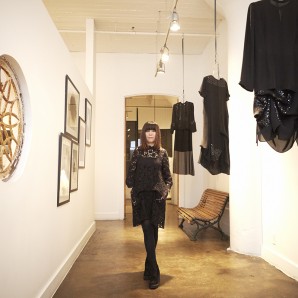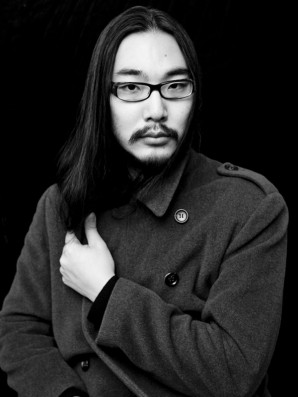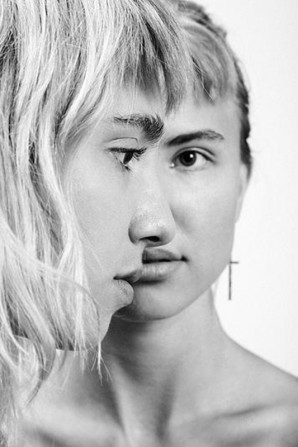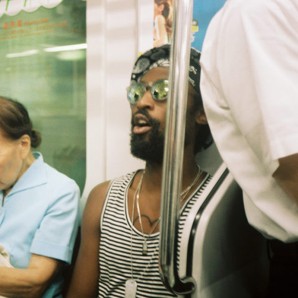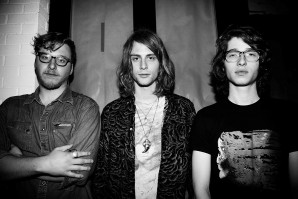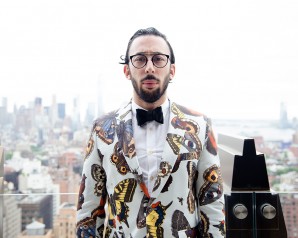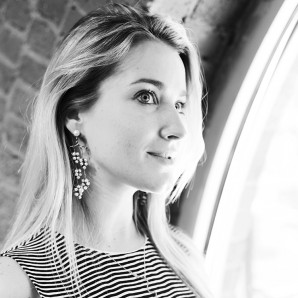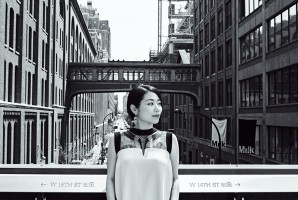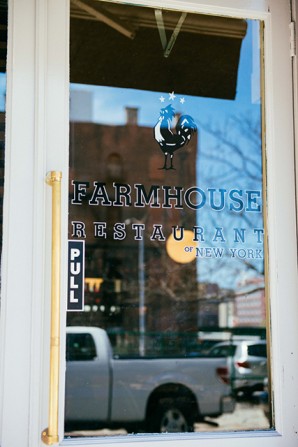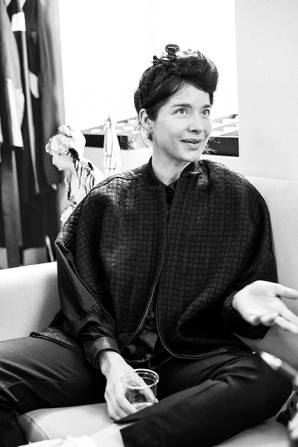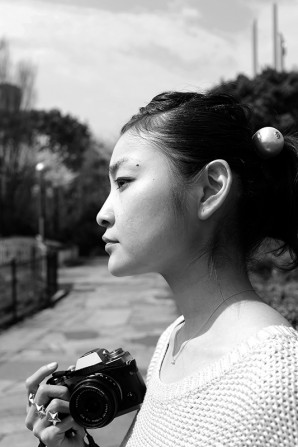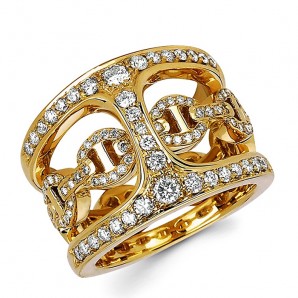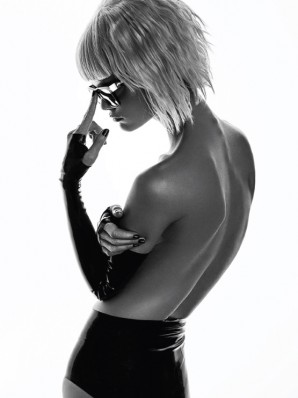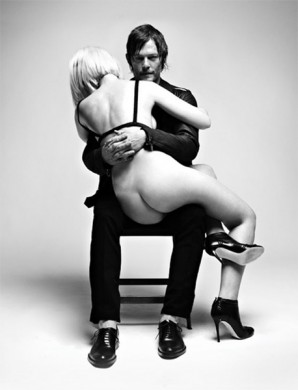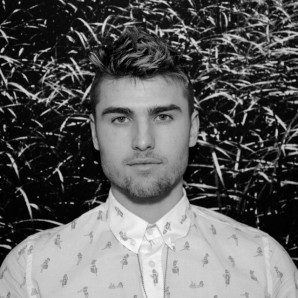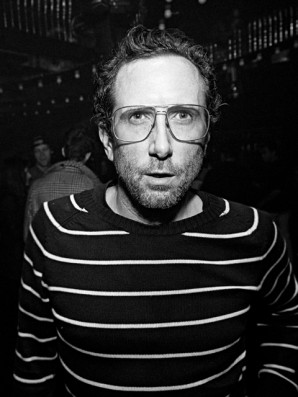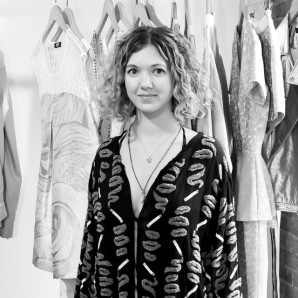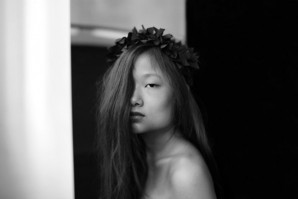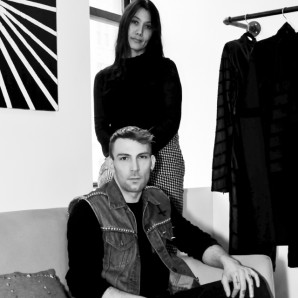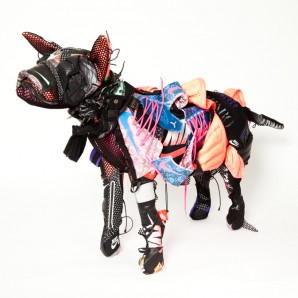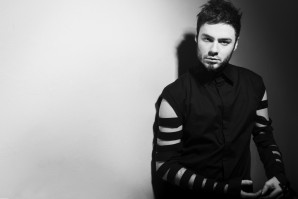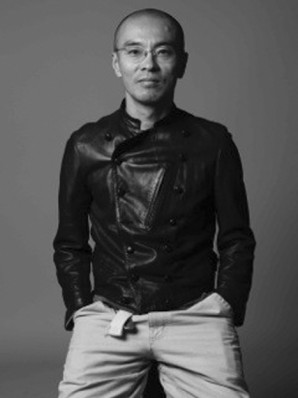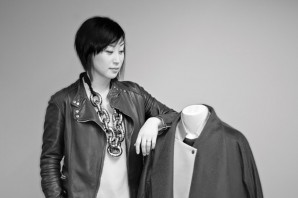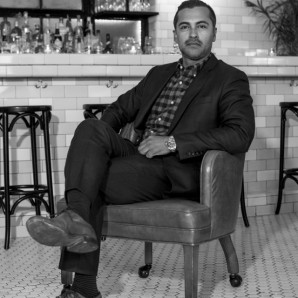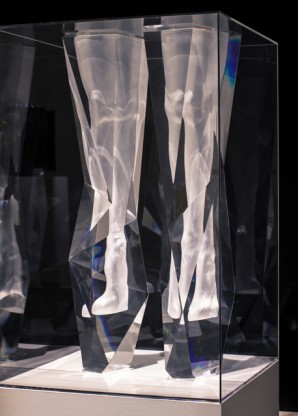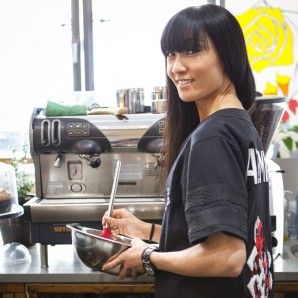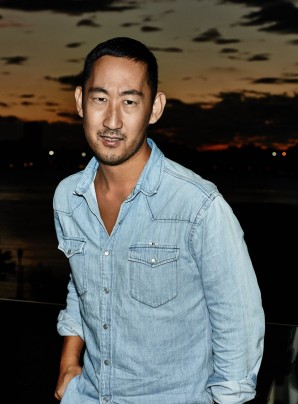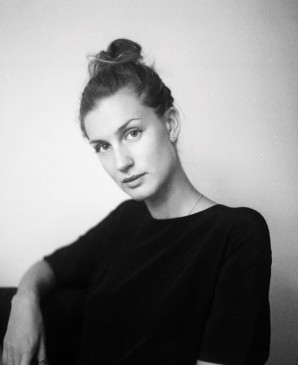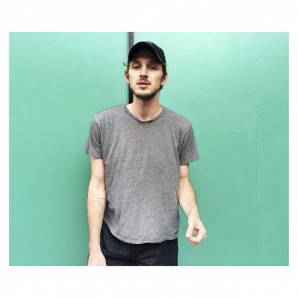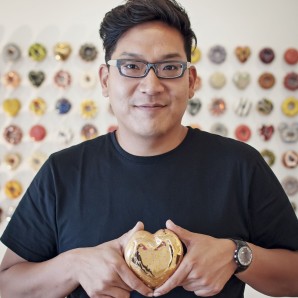"Cheng-Huai Chuang was introduced to fashion at a young age"
JAE YONG KIM INTERVIEW “CERAMIC GENIUS”
“Ceramic Genius”
Korean-born artist JAE YONG KIM has come a long way from his days back in his homeland of Seoul, Korea. Having jetted off to major cities such as L.A, and the lovely continent of Europe, KIM has seen his way around the world. These days he has made a more permanent stop in New York City- a perfect hub for creating the quirky, humorous, and eclectic work that he is known for. Despite the playful nature of his artwork, KIM’s creations deal with his deep desire to understand and find his identity and the meaning of Home. He explores these serious issues in a unique way, expending his messages through whimsical sculptures of ceramic snails and donuts. In spite of his impressive resume, having received his Bachelors of Fine Arts in Ceramics and Sculpture at the University of Hartford, his Masters of Fine Arts in Ceramics at Cranbrook Academy of Art in Michigan, and showed his work in over 40 group exhibitions such as the “East & West Clay Works Exhibition,” KIM remains humble and driven. He also shares his passion and knowledge as a professor in the Department of Art and Design at Monclair State University. I caught up with the KIM at the iconic WATERFALLMANSION located in New York City’s Upper East Side where we discussed his life as an artist and mentor, and his undeniable passion for art. It was credible to soak it all in.
Kamara Williams: What were your incentives for coming to New York City?
Jae Yong Kim: I went to grad school in Michigan and after I graduated I went to LA, Chicago, then New York. When I was in Connecticut I got a lot of offers from museums and galleries but back then I was young and I was nervous about coming to New York as an artist. Because of that reason I wanted to try it out. I wanted to know what is it like to be an artist in New York. My curiosity and ambition brought me here.
KW:I know that you’ve moved around quite a bit in your life, so was it hard transitioning into life in New York?
JYK: Transitioning was basically getting used to new things such as different types of food, and clothing. I was getting used to all these things I needed to absorb. It was challenging to focus. It took me a while to focus on my work.
KW: How has your travels influenced your artwork?
JYK: I met this professor and he said one thing that he should have done more is travel. I agree on that because I travelled through Europe a couple of times and sometimes I revisit what I’ve seen there and then it influences my work ten years later, twenty years later. It’s needed, its like studying for me because I recall what I’ve seen when its time to create. There’s an artist named Bernini who made this sculpture of an elephant with an obelisk on top without understanding what an elephant looks like. It has a Dr. Seuss kind of finish. It’s very whimsical and very fun but yet all the details are there because that’s what he’s known for. I think that work influenced me a lot. It showed me that artwork could be fun as well. It doesn’t always have to be serious and if I weren’t travelling I probably wouldn’t have seen that.
KW: Would you say that travel influences your artwork subconsciously as well?
JYK: Sure. Everything you do influences something else.
KW:I know that you use the snail as a metaphor for home, where did that idea come from?
JYK: The snail metaphor came from searching for a home, a center. When you are in another country focusing on work home doesn’t really mean much. But at the same time it is needed. I was away from home and I was curious to see where I was going with my work. Those are the questions I had in my late 20s. For that reason I started finishing my snail artwork in chrome. I want people to be stronger. Through my snail artwork, I wanted to send the message that you just have to go forward. You don’t have to know where you are going. You might know unconsciously like snails do but it doesn’t have to be definite.
KW: Why did you choose a snail and not another animal for this metaphor?
JYK: I chose snails because it carries its home on its back. For me home became a verb. Home isn’t really a physical thing that you feel and go into to be comfortable. It is more of an act for me. When I work I feel like I’m home. It was necessary to use something like snails to represent that feeling. One of my earlier artworks is entitled “Snailing” shows moving became home because “snailing” means finding a home while carrying it on your back.
KW: You mentioned that you view home as a verb, Can you tell me more about that.
JYK: I feel most comfortable when I’m working. When you’re travelling so much nowhere feels like home. Even when I’m home it doesn’t feel like home. So if I’m in Korea I don’t feel like I’m home. But if I’m in the studio working then I’m most comfortable. I feel like that is where I’m supposed to be. That’s the reason I decided to be a sculptor because when I’m actually making something or doing something I love that act. Working became home.
KW: Did you always want to be an artist? How did you get to this point?
JYK: In my freshman year of high school I was in an after school class. One of my friends said, “ lets go to the modeling club” and I was like “what is the modeling club?” He said, “ I don’t know my friend’s in it.” I decided to go to the clay-modeling club and there we used to make sculptures out of clay. Freshman year, at my first show I had a moment where I realized oh wow this is something that I’m really good at and at that time I decided to be a sculptor. Since then it has never changed. I love to see how people react to my work.
KW: What are some of the upsides and downsides of your job?
JYK: Being an artist is a great job. Working with creative people who are just passionate about what they do for a living is such a joy. I do enjoy it. I usually work very late at night as well so that’s a little difficult. The downside is me fighting myself. I fight myself all the time, which makes means it just takes longer to get some place. But I do enjoy being an artist and making other people happy. When people see my work they see my struggle transformed into joy so I enjoy that moment when I‘m showing my art.
KW: When you say fighting yourself, do you mean to come up with an idea or choose between many ideas?
JYK: Ideas are not a difficult thing for me. I always have a sketchbook. It’s more of a question of how can I execute projects. For instance, since high school I always wanted to work on a public sculpture, which I haven’t done yet. So the ideas are there it’s more of a fighting with time. With the given time how much can I put out? That was the challenge and it’s still a bit of a challenge for me because one human being can only do so much.
KW: What does art mean to you?
JYK: Art is a language for me. It’s a language that has certain meanings if people understand it. And if they don’t it doesn’t mean anything. I’m a writer in a way because I write with my work. I communicate with my work so every characteristic it has means something. I think there is more to art than the psychical art form.
KW: I know you collaborate with other artists, what is that experience like? Do you prefer working on your own?
JYK: I believe there is not much you can do by yourself and I like to work as a team because of that reason. There’s a lot of limitation. I might act like I understand everything but I don’t. As you get older, the more you realize that you don’t know anything. Sometimes when I teach a certain subject matter I know exactly what I’m talking about. Other times clearly a student says I disagree and I have to think maybe they are right. I just turned 40 and there are so many things that I don’t know so it’s very important to work with other people in different fields and absorb what they can offer to the project.
KW: What was the inspiration behind your donut exhibit called “Blah Blah Blah”?
JYK: I made the donut exhibition when I was having the most difficult time as an artist. It was challenging for me to keep going in that direction because I now have a family now that I have to support, which is not an easy thing to do in New York City. So I looked into other businesses [besides art] to provide for my family. One of the businesses I looked into was a donut shop and we invested in that restaurant and lost all our money. I wanted to have an object that symbolized something that I wanted but if I have it I will lose focus. As an artist or as a human being when you have certain needs that are fulfilled you start thinking about something else. My ambition came through but at the same time I was questioning myself. I also spoke with a lot of successful people who have succeeded in their business in New York to try to understand how to make money. The more I listened to them the more I realized they were talking bullshit. They talked about their lifestyles such as living in an expensive apartment means something and I was like you know what? I don’t understand that language. They talked about numbers and income and I didn’t understand that language so I used donuts to make a statement to say that this is what I love made out of ceramics, this is what I care for, this is what I like. That became a language that they didn’t understand. That’s also the reason that I entitled it “Blah Blah Blah.” I thought it was a funny thing to call the exhibit “Blah Blah Blah” because the more I listened to people the more I realized that I didn’t know what they were trying to say. The donut exhibition really came from trying to survive and focus on my dreams.
KW: What is your creative process like?
JYK: For my creative process I do a lot of sketching and I take a lot of pictures. So even when I’m not focused on work I’m working. I’m always trying to develop my work. I work day and night from ten to three or ten to four at night with my assistant. I make a piece by making the clay then under glazing it so its like putting on clothes and then I fire it. It takes only three days to fire it and then I take it out and put on the clothing. After I apply the makeup, which is like the glaze on the front. Once that is done I do another firing and bring it back. If I like it I’ll glaze it. If I don’t like it I’ll put another under glaze. So it’s like looking at a mirror every time I fire. I just craft it until I’m happy. When I see a piece I’m satisfied with I’m like okay done. That’s a long process. It usually takes three to four firings.
KW: How long does it take to make one of the donuts?
JYK: If I’m making one donut it takes 10 – 11 days. But if I make 50 of them together that’s a little different story. If I do an order for someone it will take two weeks.
KW: What do you enjoy doing outside of work?
JYK: Teaching is my joy. I love working with students. I never really had a mentor. None of my family members are artists. They have professions such as doctors so I never had a mentor. I like to be a mentor and give a lot of advice so that my students don’t make the same kinds of mistakes that I made. I work very closely with them. Since I got educated in Korea my teaching style is kind of east and west so I mainly focus on basic skills then I move onto creative skills. Working with them always challenges me to develop more and more.
KW: What makes you most satisfied in life?
JYK: That’s a very good question. I like being an artist is. It makes me very happy because I’m still here doing what I want to do. I think about a lot of things that I had to go through to just stand still and work everyday as an artist and it’s amazing when I think about it. For some its just like “aww he’s just an artist” but for me to be in New York City working as an artist is quite amazing. So I have to say to myself wow good job.
KW: What advice would you give to young creatives?
JYK: I work with a lot of kids and I always tell them don’t complain, stop bitching about things and believe that one of your work can change the world. Just one single individual can the program, they can change themselves, they can change the university, and they can change the state. I’ve seen the power of artwork and they have that possibility but yet they don’t even understand what’s valuable. I think whenever you are creating art think of it as the last piece you are going to create.
KW: You said that you’ve seen the power of art; can you expand on that topic?
JYK: Earlier I talked about how art is like language. When you write about some artwork you can try to understand what it is by borrowing from art history or using certain words. But the aura that you feel and see from certain works no such word can explain that. Someone who can see and feel that will go back to their studio and make something close to what they have seen. There’s no such thing as understanding you just have to be in it and feel it. I believe everyone has that possibility. I’m talking to myself as well. I see art as a very powerful culture and I wonder do we even understand it? I think it’s more than an object to sell to make a living from.
KW: How would you describe yourself as an artist?
JYK: I’m just trying to have fun meaning life isn’t easy [laughs]. I want people to lighten up by looking at my work. At my first show, this kid brought a sketchbook and he was doing some drawing. I was looking at it and I was so happy to see this young kid trying to absorb my work. Then I decided this is the direction that I wanted to go in. From then my work started to be more cartoonish because my target is not adults necessarily. It’s more for the young. I don’t see them as a consumer but I just want to make them happy.
KW: How do you want people to remember you and your artwork in years to come?
JYK: I haven’t created the work yet to say I want you to remember me as this or that. I’m interested to see what kind of work I’m going to create in the future.
KW: Do you have any projects on the horizon?
JYK: For now I’m working on a large-scale donut. It’s the same as the small ones but I want it to be more powerful. One of the things I enjoy most about the small donuts is that is urges viewers to go in to see it. It’s almost like in a diary. It’s too small so I want it to be a little bigger. I want viewers to feel it as a painting, not as a donut. Scale isn’t that important but at the small size people have a very hard time seeing it for more than what it is so I want to challenge myself with this project.
WRITTEN BY: KAMARA WILLIAMS
PHOTOGRAPH: COLIN HUGHES
@waterfallmansion
related posts
NEW TYPE #12: DROMe - MARIANNA ROSATI INTERVIEW
" I carry in my heart the values I've learned from my hometown - such as being true to myself and to my style"
IKEMEN #30: JORGE URENA
IKEMEN (ē´k´mɛn): Japanese Slang
"REALLY, REALLY, RIDICULOUSLY GOOD LOOKING PEOPLE"
NEW TYPE #11: LODOVICO ZORDANAZZO INTERVIEW
TWELV Magazine sat down with Lodovico Zordanazzo during his NYC visit to discuss his new collection and unique perspective on shoe design.
NEW TYPE #9: J.ELSTER - JENNIFER ELSTER Interview
TWELV Magazine recently visited filmmaker and designer, Jennifer Elster, at her studio, The Development.
NEW TYPE #8: MORGANE LE FAY - Liliana Casabal Interview
Noritaka Tatehana Exclusive Interview
The talented young Japanese designer, Noritaka Tatehana, who collaborated with Iris Van Herpen to design Lady Gaga’s shoes.
CHAOS CHAOS Interview
Formerly known as Smoosh, Asy and Chloe Saavedra of Chaos Chaos have always been a sister-sister duo.
THE KNOCKS Takes Tokyo
Recently, electro-pop duo, The Knocks, visited Japan to perform in the ARC+TWELV party at ARC, a newly opened venue in Tokyo.
CAVERNS Interview
TWELV had privilage of chatting with our friends from the band Caverns. The trio hail from NYC and are pretty much all over the music scene here!
Michael Phillips Moskowitz, eBay Chief Curator & Ed. Director, Interview
TWELV Magazine had the pleasure of connecting with Michael Phillips Moskowitz, the Global Chief Curator & Editorial Director at eBay.
NEW TYPE #7: EKAT - Katya INTERVIEW
"Introducing a new generation of designers"
Mai Mukaida Interview
Makeup Artist / CEO, Lalitpur.
Believes in the power of cosmetic
and lives with women in Nepal.
M KOUGER INTERVIEW: Farmhouse
With the fabulous Chloe 81, the oysterrific Chloe 81 Blue Room and the recently opened Farmhouse Restaurant, M Kouger has established an essential trifecta of entertainment in NYC’...
NEW TYPE #6: BERENIK- Veronica Brusa INTERVIEW
"Introducing a new generation of designers"
REI SHITO INTERVIEW
Street Fashion Photographer
and Style Blogger.
Loves in Street and the Beyond
Interview: The Refined Opulence of Hoorsenbuhs
The Hoorsenbuhs name has become synonymous with exclusivity, craftsmanship, and opulence. Once nothing more than the ambitious brainchild of creator Robert Keith, the brand has become a staple in...
NEW TYPE #5: HAZE Collection INTERVIEW
"Introducing a new generation of designers"
IKEMEN #29: JAY XERO
IKEMEN (ē´k´mɛn): Japanese Slang
"REALLY, REALLY, RIDICULOUSLY GOOD LOOKING PEOPLE"
Travis Bass Interview
New York’s Greenwich Village is now home to a new and amazing club created by the ultimate party planner/Pop Up Club designer, Travis Bass, called ZAZOU.
NEW TYPE #4: SAUNDER - Emily Saunders interview
"Introducing a new generation of designers"
NEW TYPE #3: GLORIA YU interview
"Introducing a new generation of designers"
IKEMEN #28: CJ Swanton & Mariko Derpa
IKEMEN (ē´k´mɛn): Japanese Slang
"REALLY, REALLY, RIDICULOUSLY GOOD LOOKING PEOPLE"
NEW TYPE #2: VINTI ANDREWS - Vinti Tan and Paul Andrews INTERVIEW
"Introducing a new generation of designers"
NEW TYPE #1: DEJAN DESPOTOVIC INTERVIEW
"Introducing a new generation of designers"
BEHIND THE SCENES #3: KATSUYA KAMO
TWELV's Behind the Scenes takes a step back and visits the masterminds behind the camera.
SUK CHAI INTERVIEW "SCHAI"
“My hands and eyes ooze desire to create when I touch something special. When I touch the “right” fabric, I usually close my eyes and visualize all the things I can create.”
IKEMEN #27: M KOUGER
IKEMEN (ē´k´mɛn): Japanese Slang
"REALLY, REALLY, RIDICULOUSLY GOOD LOOKING PEOPLE"
NORITAKA TATEHANA EXCLUSIVE INTERVIEW
NORITAKA TATEHANA EXCLUSIVE INTERVIEW
IKEMEN #26: KANAMI KAWAGUCHI
IKEMEN (ē´k´mɛn): Japanese Slang
"REALLY, REALLY, RIDICULOUSLY GOOD LOOKING PEOPLE"
MAISON KITSUNé INTERVIEW
During their first ever showing in New York Fashion Week, TWELV Magazine and I got to catch up with the talented duo behind the remarkable brand, MAISON KITSUNÉ, We spoke with Gildas Loaëc and...
MARIA HEDMARK INTERVIEW
Although Swedish transplant MARIA HEDMARK has only been in New York City for three years, her line, LINIE NYC, takes its name straight from the city that never sleeps.
IKEMEN #25: LANDON MILLER
IKEMEN (ē´k´mɛn): Japanese Slang
"REALLY, REALLY, RIDICULOUSLY GOOD LOOKING PEOPLE"

